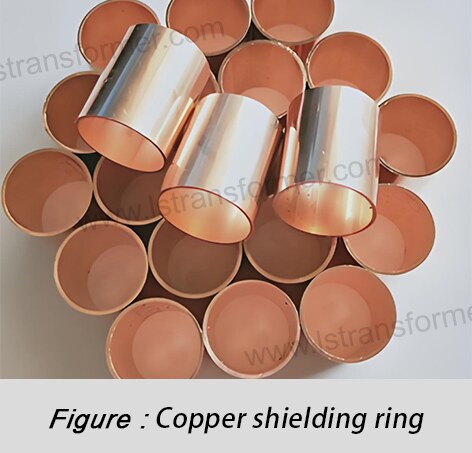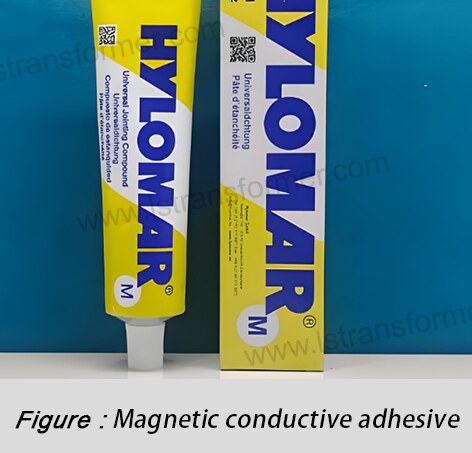How to Reduce Leakage Flux in Transformers? — Applications of Silicon Steel Lamination, Copper Shielding Rings, and Magnetic Gap Fillers
How to Reduce Leakage Flux in Transformers?
— Applications of Silicon Steel Lamination, Copper Shielding Rings, and Magnetic Gap Fillers
In power transmission and electronic devices, transformers play a critical role. However, leakage flux generated during transformer operation not only reduces efficiency but also causes electromagnetic interference (EMI), localized overheating, and noise. According to statistics from the International Energy Agency (IEA), losses in global distribution transformers account for approximately 2-3% of total power generation, with leakage flux contributing significantly. This article explores three internationally proven leakage flux suppression techniques: silicon steel lamination, copper shielding rings, and magnetic gap filler applications, helping you optimize transformer design for improved efficiency and reliability.
Content
1. Hazards and Causes of Leakage Flux
Transformers rely on magnetic coupling for energy transfer. Ideally, magnetic flux should be entirely confined within the core. In reality, however, some flux "leaks" into the surrounding space, forming a leakage magnetic field. The hazards of leakage flux include:
● Increased Losses:Leakage flux induces eddy currents in structural components, leading to significant efficiency losses.
● Localized Overheating:Eddy currents generate heat in metal parts (e.g., clamps, tanks), accelerating insulation aging.
● Electromagnetic Interference (EMI):High-frequency leakage flux disrupts nearby electronic devices.
● Mechanical Vibration and Noise: Alternating leakage forces cause core and structural vibrations.
The root cause of leakage flux is magnetic reluctance in the magnetic circuit. When core permeability is insufficient or the magnetic circuit is discontinuous (e.g., core joints, winding ends), flux tends to diffuse outward. International standards like IEC 60076 impose strict requirements on transformer losses and temperature rise, making leakage flux control essential for compliance.
2. Core Solutions: Principles and Applications
● Silicon Steel Lamination: Optimizing the Main Magnetic Circuit
The core is the primary carrier of the magnetic circuit.High-quality cold-rolled grain-oriented silicon steel (CRGO) offers extremely high permeability and low unit losses (W/kg). Its insulating coating (e.g., C5 coating), formed during high-temperature annealing, effectively blocks interlamination eddy current paths.
●Implementation and Effects:
(1) High Permeability Guides Flux:Premium CRGO steel (e.g., grade 30QG120) has an initial permeability exceeding 1900μ, far higher than ordinary steel (~200μ), significantly reducing reluctance and confining more flux within the core.
(2) Low-Loss Coating Reduces Eddy Currents:The insulating coating disrupts conductive paths between laminations, limiting eddy currents to individual sheets and drastically cutting losses. Loss values comply with ASTM A976 standards.
(3) Precision Stacking Techniques: Step-lap or 45° sources. Automated stacking systems ensure tight seams.
(4) Global Applications: European power grids widely use high-grade (low-loss) silicon steel (e.g., 23ZDKH90) combined with advanced core annealing (e.g., CAB), boosting efficiency in large power transformers.
● Copper Shielding Rings: Actively Countering End-Leakage
Transformer winding ends are high-leakage flux zones. Copper, being highly conductive, generates eddy currents (Faraday’s law) under alternating leakage flux. These eddy currents produce a counter magnetic field, partially offsetting the original leakage.
● Implementation and Effects:
(1) Precise Placement:Rings are installed near high-voltage windings or yoke areas (strongest leakage zones), with shapes matching winding ends and spacing optimized via EM simulation (e.g., ANSYS Maxwell).
(2) Eddy Current Shielding:Eddy current density

generates counter flux ΔB∝J, reducing local leakage flux density by 30%-50%.
(3) Lower Structural Losses:Suppressed leakage cuts eddy current losses in tanks and clamps, meeting IEC 61378 standards for accessory losses.
● Magnetic Gap Fillers: Sealing Magnetic "Gaps"
Tiny air gaps at core joints have much higher reluctance than silicon steel (air permeability μ0≈1.257×10−6H/m, silicon steelμr>40,000). Magnetic fillers bridge these gaps, creating low-reluctance paths.
Implementation and Effects:
(1) High-Permeability Fillers:
Modern fillers combine epoxy/polyurethane bases with >80% ferromagnetic powder (e.g., reduced iron, carbonyliron),achieving
μr=50−100.
(2) Reduced Joint Reluctance: Air gap reluctance

(3) Noise Suppression: Cured fillers enhance core rigidity, cutting magnetostriction vibrations by 5-10 dB(A).
Solution | Target Area | Core Mechanism | Advantages | Applications |
Silicon Steel Lamination | Entire core | High permeability + low eddy losses | Fundamental loss reduction | All transformer designs |
Copper Shielding Rings | Winding ends, structures | Eddy-induced counter flux | Strong localized suppression | Large power transformers, reactors |
Magnetic Gap Fillers | Core joints | Low-reluctance gap sealing | Easy application, noise reduction | Small-medium transformers, noise-sensitive cases |
Table 1: Leakage Flux Suppression Techniques Compared
In Summary
Effective leakage flux control is key to boosting efficiency, extending lifespan, and meeting global eco-standards (e.g., EU ErP Directive). Silicon steel lamination strengthens the main magnetic circuit, copper rings actively cancel end leakage, and magnetic fillers seal weak points. These techniques can be used independently or combined for optimal results. By leveraging their physics and adhering to IEC/IEEE standards, designers can mitigate leakage flux hazards, creating efficient, quiet, and reliable transformers to lead in the global green energy transition.
Contact Us
LuShan, est.1975, is a Chinese professional manufacturer specializing in power transformers and reactors for50+ years. Leading products are single-phase transformer, three-phase isolation transformers,electrical transformer,distribution transformer, step down and step up transformer, low voltage transformer, high voltage transformer, control transformer, toroidal transformer, R-core transformer;DC inductors, AC reactors, filtering reactor, line and load reactor, chokes, filtering reactor, and intermediate,high-frequency products.
Our power transformers and reactors are widely used in 10 application areas: rapid transit, construction machinery, renewable energy, intelligent manufacturing, medical equipment, coal mine explosion prevention , excitation system, vacuum sintering(furnace), central air conditioning.
Know more about power transformer and reactor :www.lstransformer.com.
If you would like to obtain customized solutions for transformers or reactors, please contact us.
WhatsApp:+86 13787095096
Email:marketing@hnlsdz.com

 EN
EN
 FR
FR DE
DE ES
ES


